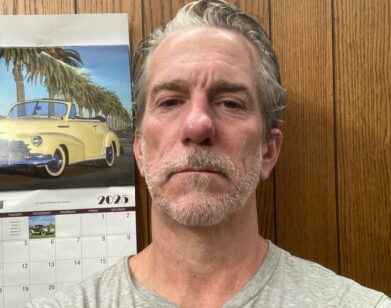It’s in the Hair: A San Francisco Vibe
Costume designer Michael McDonald, who dressed the cast for the Broadway production of “Hair,” strives for authenticity, even if it means sewing patches onto forty-year-old jeans every night. McDonald isn’t interested in how Madison Avenue would dress Claude and the tribe-nor does he condone “retrofitting” his characters. Jim Hendrix, Anita Pallenberg, John Lennon, and neo-Victorian fashions all made it to his inspiration boards. Guess what didn’t? Tie-dye. Don’t even mention it near him, for fear of a hyperbolic groan.
COLLEEN NIKA: When did you first start designing for the “Hair” franchise?
MICHAEL MCDONALD: I was very lucky to be asked to work on “Hair” two years ago, when we did the 40th anniversary concert of the production. From there, “Hair” was performed outdoors at the Delacorte Theater during the summer before it was adapted for Broadway. So because I had been running the costume shop successfully, I stayed on because it’s such a fun project.
CN: What did your research entail?
MM: As a costume designer, I really am drawn to the shows that require a lot of research and discovery. I love having to dig deeper and find inspiration in sources beyond the obvious stereotypes of an era. The best, most authentic resources, though, are always the actual physical garments themselves.
CN: I imagine that called for some serious vintage shopping sprees.
MM: In fact, that was the first thing I did, back when we were doing the concert version. But we were on a very tight schedule budget then, so we had to get a lot of bang for our buck in a short amount of time. I hit the Levi’s denim archives; that was very helpful in showing me the various styles of the era, which helped me narrow down my options and save a lot of time and money.
CN: How important is denim to the visual identity of these characters?
MM: It’s literally the fabric of these character’s lives. I chose my denim carefully; fortunately, Levi’s still makes the styles they made in the 60s, which allowed me to favor certain fits over others. The problem that arises when using actual, “correct” vintage styles is that denim tends to stiffen over time and simply doesn’t feel comfortable to wear onstage. Also, the patchwork I created on the some of the denim needed to be resewn after every show!
CN: The writing of the characters in “Hair” is quite peculiar. How did you create an identity that was collective and individual?
MM: An unusual aspect of “Hair” as a musical is that it emphasizes the ensemble, the “tribe”: a chorus of people, as opposed to the usual dramatic archetypes. Their individuality isn’t so spelled out in the script, which doesn’t give me a lot to work with, so making them as believable was a challenge.
CN: How important is authenticity to you?
MM: You always have to maintain the line, “Is this believable?” Since we have a pretty minimal stage setup, every prop, every extra detail is painstakingly chosen. I made sure the clothes for each scene used made sense for the theater setting, even during the infamous acid trip.
CN: Who was your favorite character to dress?
MM: Funny, no one ever asks me that! It’s always, “What is your favorite costume?” [LAUGHS] I’d say my favorite character to dress is Berger, with his fringed vest and patched up jeans. He’s all about fringe, which is key. I’ve see people sporting them now.
CN: Bellbottoms are threatening to return, as well. When Milk came out, Levi’s became very chic again. Is there a sort of San Francisco vibe in the air?
MM: Very, very much so. I feel it, too.
CN: Did contemporary attitudes toward the era influence the way you costumed this show?
MM: Had I done this ten years ago, I would have the influence of the late 90s hippie revival to contend with; going into this, I didn’t have such interference. I didn’t have to worry about Fashion Avenue’s interpretations of how hippies dressed, even if they are starting to catch on now.
CN: The cast of the production is amazing
MM: One of the images I was most inspired by while I did my research was a photo of a black girl in a kimono. I thought about how powerful and wonderful a visual that could be. And it’s completely unexpected.
CN: Were there any styling stereotypes you avoided?
MM: One of my original rules was: there will be no tie dye in the show! You know, it’s so sad that it’s become synonymous with hippie culture, like it was their collective uniform. It wasn’t: they were an incredibly creative generation, they had so many interesting ways of altering their clothing that there was no need to resort to tie-dye! It’s not that it’s “wrong”, it’s just too lazy an interpretation: it’s what a “bad hippie” looks like.
CN: Were you afraid the audience would wonder where all kaleidoscopic swirls were?
MM: (LAUGHS) No, I’m very pleased that I didn’t need to pander to the crowd. I’ve had people say to me after the show, “Oh my God, I just realized there was no tie-dye!” No one realizes it until later, because the costumes are so evocative of that era as it is; everyone “gets” that these are hippies. Luckily, it wasn’t even hard to avoid the cliches: once I started my research, I was overwhelmed by how imaginative their clothing could be. No rainbow swirls necessary.







